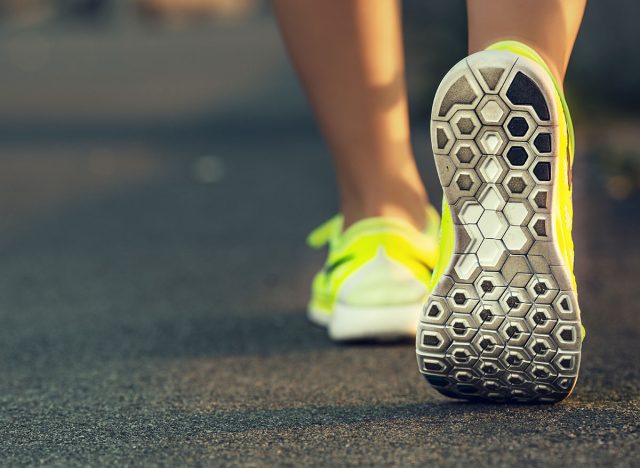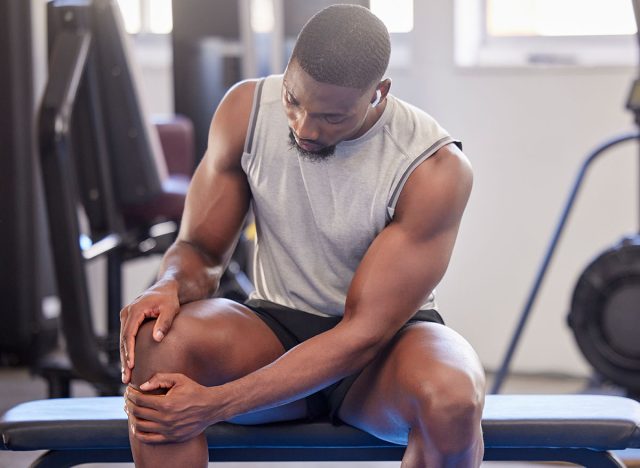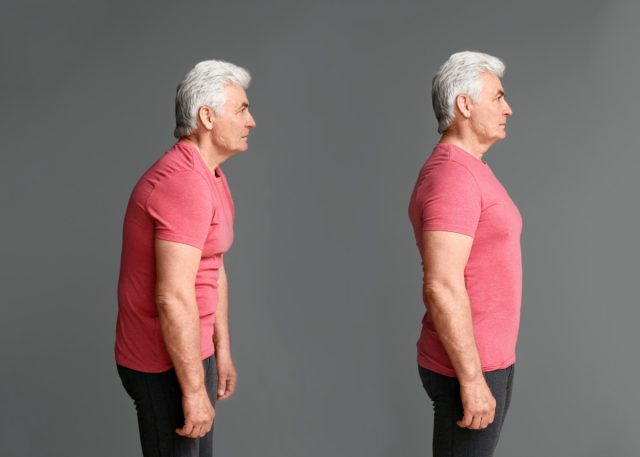Walking is a highly effective exercise that can help reduce the risk of depression, high blood pressure, diabetes, heart disease, and more, according to the Mayo Clinic. It’s also a simple way to stay active that doesn’t require equipment or a gym membership, but doing it incorrectly can cause serious issues to your knees. Walking your way to healthy fitness goals is absolutely doable, but here are six bad habits to avoid and why.
Walking Too Much Too Quickly

If you suddenly increase your walking intensity or distance, your knees won’t have time to adapt to the added stressors. This can lead to painful overuse injuries like patellar tendonitis or iliotibial (IT) band syndrome. A good rule of thumb is to increase your distance or intensity by about 10-20% per week. This allows your knee joint and the surrounding muscles to adjust.
Overlooking Gait Issues

Many people have gait issues without being aware of them. Supinating (feet rolling outward), pronating (feet rolling inward), or uneven strides can force your knees out of alignment when walking and increase wear and tear on your joints. An easy test is to look at an old pair of shoes and see how the soles wear out over time. If the outside of the sole is more worn down, you probably supinate, whereas if the inside of the shoe is worn down, you likely cause pronation. This is a good sign to have your gait assessed by a professional like a podiatrist or physical therapist. Specific exercises or custom orthotics can help correct gait problems and protect your knees.
Walking Without Strengthening Supporting Muscles

If the muscles surrounding your knees are weak, they will have a tough time supporting your knees, especially if walking is your primary source of exercise. This leaves the joint particularly vulnerable to overuse and injury. Incorporating strength training exercises for the quads, hamstrings, and calves will help keep your knees healthy and supported. Squats, reverse and side lunges, step-ups, calf raises, glute bridges, and seated quad extensions increase knee stability and strength.
Lack of Hip Strength and Engagement

Hip and glute strength are essential for proper gait mechanics. If your hip and glute muscles are weak, your knees may overcompensate for the lack of support. Over time, this can lead to muscle imbalances, overuse injuries, and joint pain. Lower body exercises like deadlifts, glute/hip bridges, banded clamshells, and side-lying leg lifts can help strengthen your hips and reduce this imbalance.
Worn Out/Improper Footwear

Shoes lose their cushioning and support over time. Wearing shoes past their prime can alter foot mechanics and lead to misalignment issues due to improper shock absorption. Walking with ill-fitting or improper footwear can also lead to foot issues like plantar fasciitis, joint stress, and tendonitis. Invest in high-quality walking shoes with proper arch support, cushioning, and the right sole for your gait if possible. Ideally, replace your shoes every 300-500 miles or when you notice wear on the sole/treads or lack of support.
Poor Posture

Walking with poor posture throws your body out of alignment; this can look like leaning too far forward, slouching over to look at your phone, or tilting your pelvis too far forward or back. The misalignment can add extra stress and pressure to your knees, causing pain and joint stress over time. Stand tall with relaxed shoulders and allow your arms to swing naturally when walking. Keep your chest lifted and shoulders open. It can help to imagine a balloon pulling the top of your head to maintain a neutral posture. Practicing posture mindfulness while you walk will help reduce knee stress and improve your gait efficiency.
Rebecca Stewart, CPT










